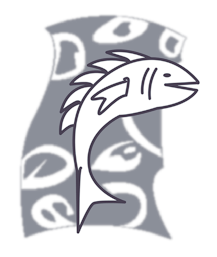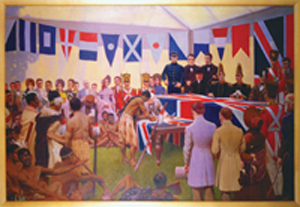|
|
||
|
Acknowledgements The Project directors acknowledge the vital support and contributions ofmany people to this report, including:
Each year, small random samples of children are selected nationally, then assessed in their own schools by teachers specially seconded and trained for this work. Task instructions are given orally by teachers, through video presentations, on laptop computers, or in writing. Many of the assessment tasks involve the children in the use of equipment and supplies. Their responses are presented orally, by demonstration, in writing, in computer files, or through submission of other physical products. Many of the responses are recorded on videotape for subsequent analysis. The use of many tasks with both year 4 and year 8 students allows comparisons of the performance of year 4 and 8 students in 2001. Because some tasks have been used twice, in 1997 and again in 2001, trends in performance across the four year period can also be analysed. In
2001, the third year of the second cycle of national monitoring,
three areas were assessed: mathematics, social studies, and information
skills. This report presents details and results of the social studies
assessments. SOCIAL
ORGANISATION The students achieved quite a high level of consensus about the requirements for good team members and leaders, with strong emphasis on being encouraging, helpful and fair, and not being too bossy or dominating. Year 8 students continued along these lines when they explored the rights and responsibilities of students and teachers. They believed they had a right to be treated kindly and fairly, and allowed reasonable freedom of expression, while their responsibilities included being respectful and helpful to the teacher, kind and fair to their fellow students, and trying hard as learners. They perceived the main right for teachers to be having students who paid attention, were respectful and not disruptive, and the main responsibilities to be well prepared, try hard as a teacher, treat children kindly and fairly, and try to make school a safe place. Performance was predictably lower on tasks that explored students’ understanding of aspects of social organisation that they would have more distant contact with, such as how community and national leaders win their positions, the challenges associated with disability, and steps in proposing and implementing new laws. CULTURE
AND HERITAGE Students at both levels generally succeeded well with associating symbols or logos with the associated New Zealand activities or features, but showed quite limited knowledge and understanding of the Treaty of Waitangi and early New Zealand history. About half of the year 8 students showed little understanding of the importance of cultural traditions for immigrants from other cultures, and fewer still had well developed ideas about important features of New Zealand culture. PLACE
AND ENVIRONMENT Working
in teams, students had good success in associating photographs with
their countries of origin and various activity categories. Year
4 teams also did a reasonable job of demonstrating understanding
of important differences between town and country life. Students
showed less understanding of the information needs of immigrants,
and quite limited knowledge of New Zealand and Pacific geography.
TIME,
CONTINUITY AND CHANGE Because
these tasks required knowledge or understanding of history or the
cause and effects of historical changes, and these are things that
students learn about rather than experience, performance on these
tasks was not strong. In particular, students showed quite limited
knowledge of New Zealand history. RESOURCES
AND ECONOMIC ACTIVITIES Most
students could identify ways in which rivers formed a useful resource
for people, most notably themselves or other children. They were
less successful in seeing the attractions of New Zealand from the
perspectives of overseas tourists, often highlighting buildings
or entertainment activities that are not particularly special for
overseas visitors, but more likely to be of interest to New Zealand
children touring within the country. TREND
INFORMATION SURVEY
Students were then asked to rate how often they learnt about the same eight things. Year 4 students thought that all areas featured fairly equally in their classroom programme, except current events (what is happening in New Zealand and in other countries), which they thought they learnt about more often. Year 8 students also thought they learnt more often about current events, as well as living in the future. They thought three areas featured least prominently: the work people do and how they make a living, why people have different ideas, and how people lived “in the olden days”. There is one noteworthy change between 1997 and 2001. Asked “How much do you think you learn in social studies at school?”, substantially fewer students chose the most positive rating in 2001 than in 1997. For year 8 students,the percentage of students selecting that option dropped from 50 to 30, and for year 4 students from 29 to 16. PERFORMANCE
OF SUBGROUPS There
were more differences associated with geographic zone in 2001 than
in 1997, when students from the South Island performed best on 5
percent of the year 4 tasks and 22 percent of the year 8 tasks.
The corresponding percentages in 2001 were 11 and 20, but this time
South Island students also performed worst on some tasks (8 percent
at year 4 and 2 percent at year 8). All of the latter tasks involved
Mäori contexts. Patterns
of gender differences also changed between 1997 and 2001. In 2001,
year 4 girls scored better than boys on 7 percent of tasks (none
in 1997) and worse on 17 percent of tasks (14 percent in 1997).
Year 8 girls performed better than boys on 9 percent of tasks (16
percent in 1997) and worse on 6 percent of tasks (32 percent in
1997). Mäori
and non-Mäori students performed differently on 36 percent
of year 4 tasks in both 1997 and 2001, with non-Mäori students
performing better in almost all cases. At year 8 level, non-Mäori
students performed better than Mäori students on 51 percent
of the 2001 tasks (substantially lower than 68 percent in 1997). The
SES index (based on school deciles) showed the strongest pattern
of differences. In 2001, students in low decile schools scored lowest
on 67 percent of the year 4 tasks (53 percent in 1997) and 76 percent
of the year 8 tasks (73 percent in 1997). Year 4 students in low
decile schools were, however, distinctly more positive about studying
social studies than their counterparts in medium and high decile
schools. PACIFIC
SUBGROUPS Pacific students scored lower than “other” students on 20 percent of the tasks at year 4 level and 14 percent of the tasks at year 8 level, but higher than “other” students on 1 task (3 percent of tasks) at both levels. Year 4 and year 8 Pacific students performed very similarly to Mäori students. It is noteworthy that in the Social Studies Survey, Pacific students were less positive than Mäori or “other” students on four rating items at year 4 level and seven rating items at year 8 level. |
 New
Zealand’s National Education Monitoring Project commenced in
1993, with the task of assessing and reporting on the achievement
of New Zealand primary school children in all areas of the school
curriculum. Children are assessed at two class levels: Year 4 (halfway
through primary education) and Year 8 (at the end of primary education).
Different curriculum areas and skills are assessed each year, over
a four year cycle. The main goal of national monitoring is to provide
detailed information about what children can do so that patterns
of performance can be recognised, successes celebrated, and desirable
changes to educational practices and resources identified and implemented.
New
Zealand’s National Education Monitoring Project commenced in
1993, with the task of assessing and reporting on the achievement
of New Zealand primary school children in all areas of the school
curriculum. Children are assessed at two class levels: Year 4 (halfway
through primary education) and Year 8 (at the end of primary education).
Different curriculum areas and skills are assessed each year, over
a four year cycle. The main goal of national monitoring is to provide
detailed information about what children can do so that patterns
of performance can be recognised, successes celebrated, and desirable
changes to educational practices and resources identified and implemented. Students
were asked to rate how much they liked learning about each of eight
things in social studies. At both year 4 and year 8 level, students
were most positive learning about living in the future. Many year
4 students also liked learning about other places in New Zealand
and how people live there. Year 4 students showed least liking for
learning about what is happening now in New Zealand and other countries,
and how people lived “in the olden days”. At year 8 level,
fewer students liked learning about the work people do and how they
make a living, and about why people have different ideas.
Students
were asked to rate how much they liked learning about each of eight
things in social studies. At both year 4 and year 8 level, students
were most positive learning about living in the future. Many year
4 students also liked learning about other places in New Zealand
and how people live there. Year 4 students showed least liking for
learning about what is happening now in New Zealand and other countries,
and how people lived “in the olden days”. At year 8 level,
fewer students liked learning about the work people do and how they
make a living, and about why people have different ideas.